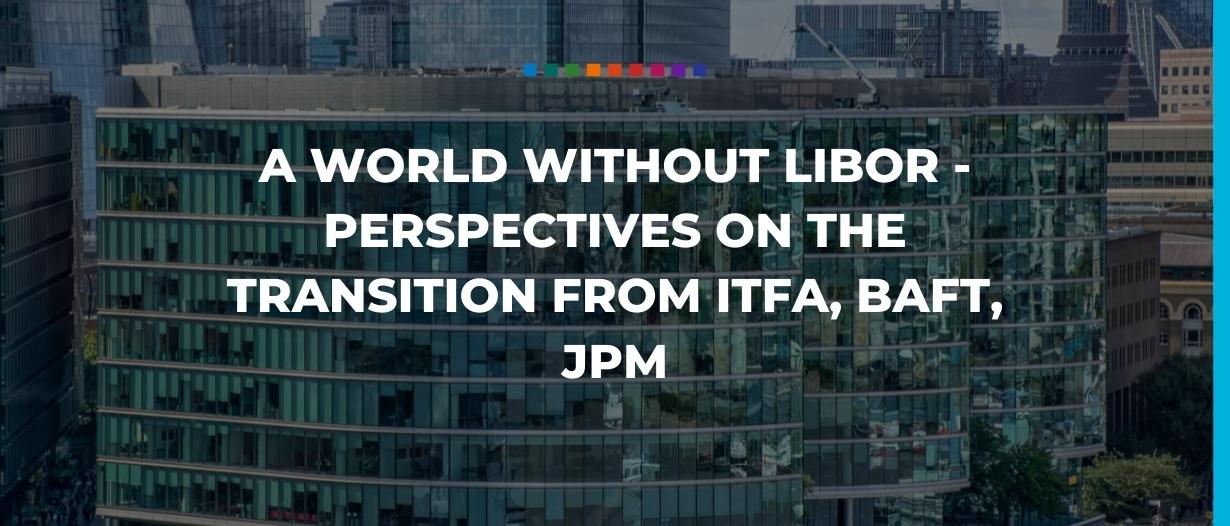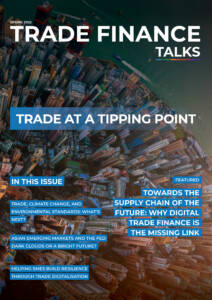Almost two weeks have passed since the retirement of the world’s most important number: the London Interbank Offered Rate (LIBOR).
For almost half a century, LIBOR functioned as a benchmark for global interest rates, and its ups and downs influenced an entire universe of financial instruments.
From short-term unsecured loans to floating rate contracts such as derivatives, corporate debt, mortgages, and home loans, LIBOR affected the cost of credit across all regions, industries, and currencies.
It was calculated through a daily survey of major global banks, who were asked what their borrowing costs were expected to be over a number of timeframes, up to 12 months.
The highest and lowest quotes were dropped, while the rest were reduced to an average that formed the rate.
So integral was LIBOR to the global financial system that at its peak in 2020, over $400 trillion in outstanding contracts were exposed to it.
It should come as no surprise, then, that with LIBOR’s demise came a sense of foreboding for the trade finance world.
As the Bank of England’s Alastair Hughes told Trade Finance Global: “If you’re burying your head in the sand because someone’s told you LIBOR was going to continue, or you don’t have to do anything – that’s definitely not the case.
“LIBOR will cease, so you do need to engage, you need to understand what your exposure to the LIBOR rate is, both in terms of future use of products, and, indeed, those legacy products.”
A financial millennium bug
Some worried that LIBOR’s cessation – which took place at midnight on December 31, 2021 – had the potential to cause a ‘Y2K moment’ for global finance.
Also known as the ‘millenium bug’, older readers will recall that this mysterious creature had once threatened to bring down the world’s computer systems overnight.
As 1999 gave way to the year 2000, technicians worried that the widespread use of only two digits for years in the date format of computer programmes could cause a global IT crash, as the clocks ticked over at midnight December 31.
Thankfully, however, the transition from 1999 to 2000 passed mostly without issue, and the bug turned out to be quite the anti-climax.
In a similar manner, lights off on LIBOR hasn’t led to a financial meltdown.
On the contrary, the trade finance world has adapted quite smoothly to life without LIBOR, thanks to a new menu of alternatives for banks and corporates both large and small to choose from.
LIBOR alternatives in practice – The view from ITFA
As chairman of the International Trade and Forfaiting Association (ITFA), Sean Edwards has had a unique view of the LIBOR transition.
Speaking to Trade Finance Global, Edwards said that the transition has caused very few issues so far for ITFA’s 300-plus members.
“For those currencies where LIBOR is no longer quoted, such as sterling and yen, the transition process has been largely successful,” he said.
“There was a small overhang of deals into the New Year, which we expect to be cleared up in Q1.”
As previously reported by Trade Finance Global, among the alternatives to LIBOR is an interest rate known as synthetic LIBOR.
Synthetic sterling LIBOR is based on the sum of the one-, three-, or six-month Sterling Overnight Index Average (SONIA) reference rate, which is provided by the ICE Benchmark Association (IBA) and the International Swaps and Derivatives Association (ISDA).
Edwards said he sees synthetic LIBOR as a “refuge for the desperate only”, but added that it is “unsurprising” that it has nonetheless found a user base, given that there is “really no choice but to find an alternative.”
Transition from USD LIBOR presents a greater challenge, however, as it will continue to exist in some form until mid-2023.
“With pre-2022 committed facilities continuing to be priced on this basis, there is a competing and confusing array of alternatives to choose from,” said Edwards.
“The regulators – both in the UK and the US – have been clear that they wish to see no new USD LIBOR-denominated transactions, and require banks to reduce the number of legacy transactions.
“However, globally, not all regulators may take the same view, and it is not always crystal clear how a new transaction is defined. This is the problem of new drawings under pre-2022 uncommitted facilities.”
From the menu of available alternatives, Edwards’s personal recommendation is on the Term Secured Overnight Financing Rate (SOFR).
Term SOFR is an observed rate based on real transactions, and is published by the Federal Reserve Bank of New York as both an overnight rate and as 30-, 90-, and 180-day compounded averages of observed rates.
“The direction of travel is clear, not least because Term SOFR is where the liquidity is and where it percolates through,” said Edwards.
“Needless to say, ITFA will be doing its best to clear up the confusion.”
Trade Finance Global has also been involved in clearing up that confusion, having partnered with ITFA to launch a LIBOR For Trade Finance Hub in June last year.
BAFT calls for ARRC to endorse 12M Term SOFR
Observers at another industry body, BAFT, the Bankers Association for Finance and Trade, have had a similar experience as ITFA’s Edwards.
Diana Rodriguez, vice president for international policy at BAFT, agreed that no one rate will replace USD LIBOR in the short-term.
Instead, it will be up to banks to decide which one best suits their needs, now that two tenors of USD LIBOR have ceased, and regulators have been clear that the remaining tenors are for new contracts or renewals.
At BAFT, Rodriguez said she has seen a “significant uptick” in the use of Term SOFR, which was endorsed by the New York Fed’s Alternative Reference Rates Committee (ARRC) in July last year.
She added that the Bloomberg Short-Term Bank Yield Index (BSBY) is also under consideration among BAFT members for certain trade finance products.
“For now, what we are seeing is that one rate will not replace LIBOR,” said Rodriguez.
“Regardless of which rate an institution chooses, bank examiners will want to see that a bank is meeting the safety and soundness principles laid out by regulators.”
Rodriguez stressed that banks should have a clear understanding of the composition of the rates they intend to use, and should have transition plans in place for committed and uncommitted facilities alike.
They should also have plans to effectively communicate with clients throughout the transition process.
“In the final months of 2021, regulators issued clear regulatory guidance, stating that banks need to employ risk management plans to pivot from LIBOR to alternative reference rates,” she said.
“In the coming weeks and months, the trade finance industry would like to see the ARRC formally endorse the 12-month Term SOFR rate, as well as greater industry coalescence on the credit adjustment spread.”

Communication is key – JP Morgan on delivering LIBOR transition to clients
At JP Morgan, America’s largest bank by market cap, the challenge of communicating LIBOR transition to clients has also been a high priority.
Natasha Condon, global head of core trade at JP Morgan, said that LIBOR transition presented not just one challenge for the bank, but several challenges rolled into one.
”Firstly, a strategic one, to align the bank’s funding model with regulatory guidance, which has changed multiple times during the preparation stage,” said Condon.
“Secondly, a technology challenge, as not only our systems, but all of our clients’ systems need to be updated to handle the new risk-free rates.
“And thirdly, and most importantly, a communication challenge for the bank with its clients – both corporates and financial institutions.”
Echoing both ITFA and BAFT, Condon said the transition at JP Morgan was well managed, thanks to early preparation and close cooperation with clients.
“The working group at JP Morgan did a fantastic job of managing this transition on all points, and from a technology perspective, I could not have asked for a smoother switchover,” she said.
“But especially in trade finance, I think our key strength has been in client communication, which turned out to be the most critical issue of all.”
Condon acknowledged that, for clients, the LIBOR transition has the potential to be “very confusing”, since different banks may take different approaches to the pricing of a deal, which can make it difficult for clients to compare quotes between providers.
“Our clients in trade finance vary from the most sophisticated banks and corporates – who are already set up to handle multiple rates and fully understand the differences – to smaller clients who have never heard of any of the alternative rates, and have been working happily from LIBOR for many years,” she said.
In practical terms, Condon said that much of the heavy lifting behind the LIBOR transition at JP Morgan therefore fell to the sales team, who were called on to educate and inform clients, and pitch alternatives that best suit their needs.
“The key for our transition was to agree a very simple, extremely transparent communication plan, so that every client who gets a quote from JP Morgan understands exactly what rate they are being offered, and how that compares to the rate they might have been used to before,” she said.
“A lot of the burden fell on our sales team to take our message to the clients, and to ensure they were completely clear on what we were doing.
“As soon as we started communicating in this way, we found that our conversations with clients improved dramatically, and they were much more comfortable doing business based on the new rates.”












































